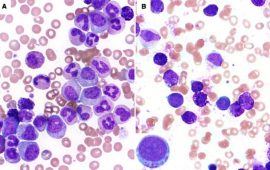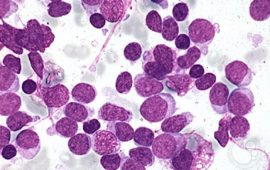Benzene is a clear, sweet smelling chemical that has been linked to various forms of leukemia as well as other health issues. It is thought that many chemical companies have been aware of the dangers of Benzene for quite some time, but despite this knowledge these same companies failed to warn workers or protect them …
Benzene
Benzene, a clear liquid chemical that with a sweet smell, is very widely used in a range of products. This means that most people are exposed to this chemical is some form or another every day of our lives.
However, this chemical can have deadly effects on those that are exposed to it for long periods of time or in high levels – in fact, Benzene has been classified as a Class A carcinogenic by the Environmental Protection Agency. This is a chemical that also occurs naturally in the environment, but the major threat from this chemical comes from Benzene that is used in a range of manmade products.
There are a number of sources of benzene exposure, and these include products such as solvents, detergents, plastics, synthetic fibers, dyes, rubber, resins, paint, and many other items. This chemical can also be found in cigarette smoke and within the petroleum industry. Those at highest risk of prolonged or high level exposure are people that work with the chemical.
Those working with petroleum based solvents are classed as high risk because they inhale the vapors released from the solvent products, as well as through the skin in the event that the solvent makes contact with the skin during work. Some of the high risk group occupations have been identified as chemical workers, refinery workers, rubber workers, printers, leather workers, press workers, painters, and gasoline distributors.
Benzene is known to be responsible for a number of health disorders, and is linked with various types of leukemia amongst other illnesses. In addition to respiratory problems, skin problems, and blood disorders, the cancers that are linked to benzene exposure include acute myelogenous leukemia (AML), acute lymphocytic leukemia (ALL), chronic myelogenous leukemia (CML), chronic lymphocytic leukemia (CLL), hairy cell leukemia (HCL), non-Hodgkin’s lymphoma (NHL), Hodgkin’s disease, multiple myeloma, myelodysplastic syndrome (MDS).
This area of Clean Water Partners aims to provide information with regards to a range of benzene related matters, from some of the different types of leukemia and illnesses that can be caused by exposure to matter relating to the legal rights of those affected by ill health through benzene exposure.
Benzene exposure is an article that provides information about the various effects of exposure to this chemical, what this chemical is, and what sort of health risks high level or prolonged exposure can cause.
Acute and chronic benzene health effects lists the various acute and chronic health issues that are linked to exposure to benzene. You can also find out more about additional health effects, including the various cancers that can be caused by exposure to benzene.
Benzene and leukemia focuses on the carcinogenic effects of benzene, detailing the different types of leukemia that can result from exposure to this chemical, as well as discussing past studies that illustrated a link between benzene exposure and leukemia.
Acute myelogenous leukemia is one type of the cancer that can be caused by exposure to benzene, and this article discusses the symptoms of this disease, how it can affect the body, and what the possible treatments for the disease are.
Acute lymphocytic leukemia is another type of cancer that can be caused by exposure to benzene, and this article discusses the symptoms of this disease. It also details how this form of the disease can affect the body, and what the possible treatments for the disease are.
Chronic myelogenous leukemia is yet another type of cancer that can be caused by exposure to benzene, and this article details the symptoms of this disease and how it can affect the body. You can also learn more about the possible treatments for the disease.
Aplastic anemia is a blood disorder that is linked to high level or prolonged exposure to benzene amongst other things. This article explains what the disease is and how it can affect the body, what the symptoms and diagnostic methods are, and what sort of treatments can be considered.
Benzene lawyer discusses the importance of getting legal assistance in the event that you have been affected by benzene exposure. The article also illustrates why you should opt for a lawyer that is experienced and qualified in this particular field.
Benzene lawsuit is about the rising number of lawsuits, and discusses how you can improve on your chances of success, who can claim compensation and what the payout aims to cover, and how compensation may be worked out. You can also get a general overview of benzene and the symptoms to look out for.
Acute Myeloid Leukemia Information Is Coming To CleanWaterPartners.org Soon!
Benzene Lawsuit
Benzene, a colorless, sweet-smelling chemical, is used in a number of products, including dyes, solvents, paints, plastics, chemical products, and the petroleum industry. Those working with Benzene products are classed as a high risk group, and this is because these people are at increased risk of dangerous exposure levels of Benzene, which can result in …
Aplastic Anemia
Benzene is a colorless, sweet smelling chemical that has been linked to a number of health problems and side effects. This is a chemical that can be found naturally occurring in the environment. It is also used in a variety of man-made products, such as solvents, paints, dyes, in the petroleum industry, and in a …
Chronic Myelogenous Leukemia
Used in a range of plastics, chemical products, and household products, Benzene is a chemical has been linked to leukemia since the late 1800s. Benzene is a colorless, sweet smelling chemical that has been linked to a number of health problems and side effects in addition to cancer. This chemical has been linked to various …
Acute Lymphocytic Leukemia
A colorless chemical that is sweet to the smell, Benzene is a dangerous chemical that can be found naturally occurring in the environment. It is also used in a variety of man-made products, such as solvents, paints, dyes, in the petroleum industry, and in a number of chemical and household products. This chemical has been …




